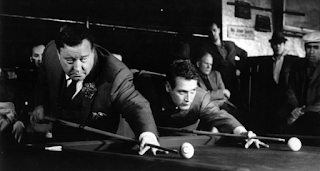What do you get when you bring together a mind-boggling, all-star cast, including Leonardo DiCaprio, Jennifer Lawrence, Meryl Streep, Cate Blanchett, and a host of other familiar faces for a satire written and directed by Adam McKay (“Anchorman” “Talladega Nights”)? Turns out, you get an unsubtle, overlong, made-by-committee mess.
Lawrence plays grad student Kate Dibiasky, and DiCaprio is her astronomy professor, Dr. Mindy. When they discover a giant comet hurdling towards earth, they report the discovery to NASA and the President. That's what you are supposed to do, right? If you see something, say something. What they don't expect is the lack of response. With the mid-term elections coming up, President Orlean (Meryl Streep) feels it's better to just “sit tight and assess.” The scientists take their story to the media, but the public is more interested in the latest celebrity breakup. Even when the government finally acknowledges the crisis, there are a sizable number of comet-deniers. When the fateful comet becomes visible to the naked eye, the scientists exhort people to “Just Look Up” and see it for themselves. By that time, though, President Orlean has found it expedient to play to the head-in-the-sand crowd, making her slogan “Don't Look Up.”
So, we have a story about a massive catastrophe affecting the entire planet, and our leadership, especially American leadership, is too partisan, short-sighted, and incompetent to do the obvious things that need to be done to address the crisis. The President denies, gaslights, and leads her benighted base in stupid chants, while the media plays to whatever will give them the most clicks. How far-fetched is all that, right? “Don't Look Up” would be a pretty apt satire of the Covid pandemic, but since production started in 2019, I'm pretty sure it is meant as a commentary on the climate crisis.
Either way, the movie is about as subtle as a sledgehammer. I wouldn't absolutely condemn the film just for being too on-the-nose. “Dr. Strangelove” isn't exactly subtle either, and it's a classic. “Don't Look Up” is no “Dr. Strangelove,” however. Even if we forgive the film its scenery-chewing excesses, what we have here is 1 ½ hours of entertainment packed into 2 hours and 18 minutes. There's a decent movie in there somewhere. McKay got some good, if over-the-top performances out of a ridiculously talented group of actors, and he also delivers quite a few wry laughs. There is just too much of it all. What this movie needed was a merciless editor, someone who wasn't afraid to litter the cutting-room floor. The problem may be too much starpower. Wikipedia says that DiCaprio signed on only after major adjustments to the script, and I'll bet he wasn't the only A-lister who had some “notes.” You think a Meryl Streep or a Cate Blanchett is going to tolerate having her scenes cut?
Besides being bloated and self-indulgent, “Don't Look Up” seems destined, like most social commentary these days, to change few minds. Would a better, more concise movie fare better in this regard? It's hard to say. The thing is, everyone watching is going to count themselves among Team “Just Look Up.” I've been paying attention, though, and there are definitely a lot of “Don't Look Up” people out there.
2 stars out of 5































